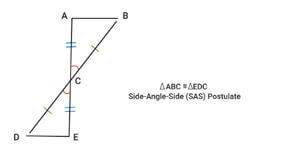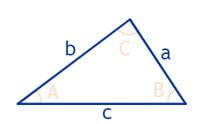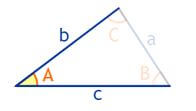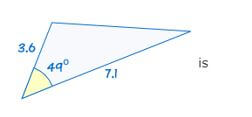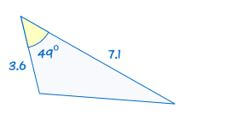Updated March 15, 2023
Introduction to SAS Congruence
The SAS congruence is one of the rules, and it can be used with the two sides of the angle, and it will be equal with the one set of triangles two sides which is included with the other set of triangles then it’s the congruent one it is formed only in two sides that can be the mathematical function here the Side-Angle-Side denotes SAS.
What is SAS Congruence?
SAS is the Side-Angle-Side triangle that includes the angle for the congruent, and it is the method for remembering the angle. And it must be included through the congruence and a pair of sides which helps them to congruent the triangle. There is no way to congruent the triangle, and all the three vertices of the triangle are fixed between the two sides, which is defined by the triangle.
Two sides of the triangle are included to define the triangle corresponding to the parts of the congruence, and satisfying the whole triangle to satisfy the angled sides. Reference data sets are mainly compared and matched with the other reference of one-to-one mapping values from one dataset to another. The dataset is almost to the isomorphic values of the two reference datasets.
How to Find SAS Congruence?
SAS has a lot of datasets that might have more than n number of values on the two different datasets values by the conceptual domains. These two reference datasets are closely isomorphic to the exceptional values of the outside of the intersection to propose a threshold percentage and sizes to the cardinality of both datasets. We can mainly call and reference the datasets of the congruent to almost equivalently sets to be harmonized discrepancies depending on a few qualitative notations and attributed to the error definition of the enumeration processes.
The USPS and other measurements of the triangle are calculated by using the sides and angles of the two triangles. The main criteria are the triangle sizes and shapes, which are referred to as the congruent triangle and rotated, reflecting each other positions or appearances that can be deemed to be more identically each other of the experiments and it satisfied the different conditions or rules to compare triangles. SSS, SAS, AAS, ASA, and RHS are the configurations and properties of the triangle sides criterion, including the triangle postulate of the EDC images.
The above image shows the two triangles, which are calling it as the variables as A, B, C, D, and E C is the center point of the two different triangles and is denoted as the Side-Angle and Side.
We need to know the below steps for identified the SAS Congruence:
1. First, we need to confirm exactly that the triangle has three sides.
2. And then make sure all the three sides are connected with right angles for all the same sides.
3. Generally, the three sides and all the three angles are out of the six sides, which is enough to find the two triangles.
4. In The above triangle, we can specify the degree and angle for all the sides values like 3.6, 49 degrees and 7.1, etc.
5. Which is equivalent to the congruent triangle like below.
6. The triangle, which shows the two sides and is also included through the one angle of the triangle, is equal to the other triangle with corresponding sides. That makes the congruent triangle.
How to Use SAS Congruence?
First, we need to set the SAS congruence rule on the two sets of triangles that can be mainly included for each set of angles that one related to the one triangle for equal sides. One triangle is equal to the two sets of sides and is included in the other set of triangles. We can prove the side-angle-side criteria for rigid transformation congruence definition of the two sides and include one triangle side, which populates the statements and other reasonable triangles. Segment congruence equivalent to the same length and rigid transformations can be preserved at the same distance at the points of the congruence figures if and only if rigid transformations exist will map one figure into the other. AB and CD are the two congruent having the same length that can be mapped to the other definitions congruence distance are calculated and preserved to the other equal functions like AB=CD, then it comes under the ¯AB.
The arrow symbol is used for each vertex for triangle reshape and observed it in the congruent triangles transformation to the above SAS triangles. Each vector shape is to perform the rigid transformation at point levels translates to the SAS criterion for showing congruent triangles. Then SAS will be worked in the rigid transformations has part of angle sides which is fitted on the pair of angles which is not same on the other two triangles. Likewise, SAS is the first triangle area fits, and the second triangle, referred to as the SSA, does not have enough information to know the congruent triangles.
Likewise, if we have two sets of triangles like ABC and DEF points and drawn as below:
It has a couple of pairs of sides that combine the equal set of lengths on the two triangles AB and DE both are equal since C and F are omitted; hence the AB and DE are named as congruent.
The AB and DE bars are upgraded, and it measures the three dots as the:
- The upside and downside of the triangle came as congruency by comparing the side length.
- If the AC and DF are congruent, the two sides are the same as AC and DE.
- Next, we need to identify the angles like <A and <D are the two angles marked as equal for the proof statement.
SAS Congruence Rule
It follows some set of rules which apply in the SAS on Sides-Angle-Sides:
- It should follow the two sets of triangles on the sides and angles.
- That sides and angles must be included between one side and corresponding to the other two sides.
- If the triangles are congruent, then we used delta symbols like ∆ ABC ∆ and DEF to measure the triangle’s congruent.
- Once the delta and bar symbols are in the variables, we can add the values for to perform the mathematical operations on the given sides.
- SAS has some specific reasons for performing the congruent triangle statement operations.
Conclusion
SAS has many features and functions to perform statistical data operations like that SAS congruent. SAS Postulate is some triangle type of function to perform the Geometrical operations in the user datas. SAS congruent set of triangles is calculated the angle values of all the three consecutive sides.
Recommended Articles
This is a guide to SAS Congruence. Here we discuss the introduction, and how to find SAS congruence? Use and rule, respectively. You may also have a look at the following articles to learn more –


